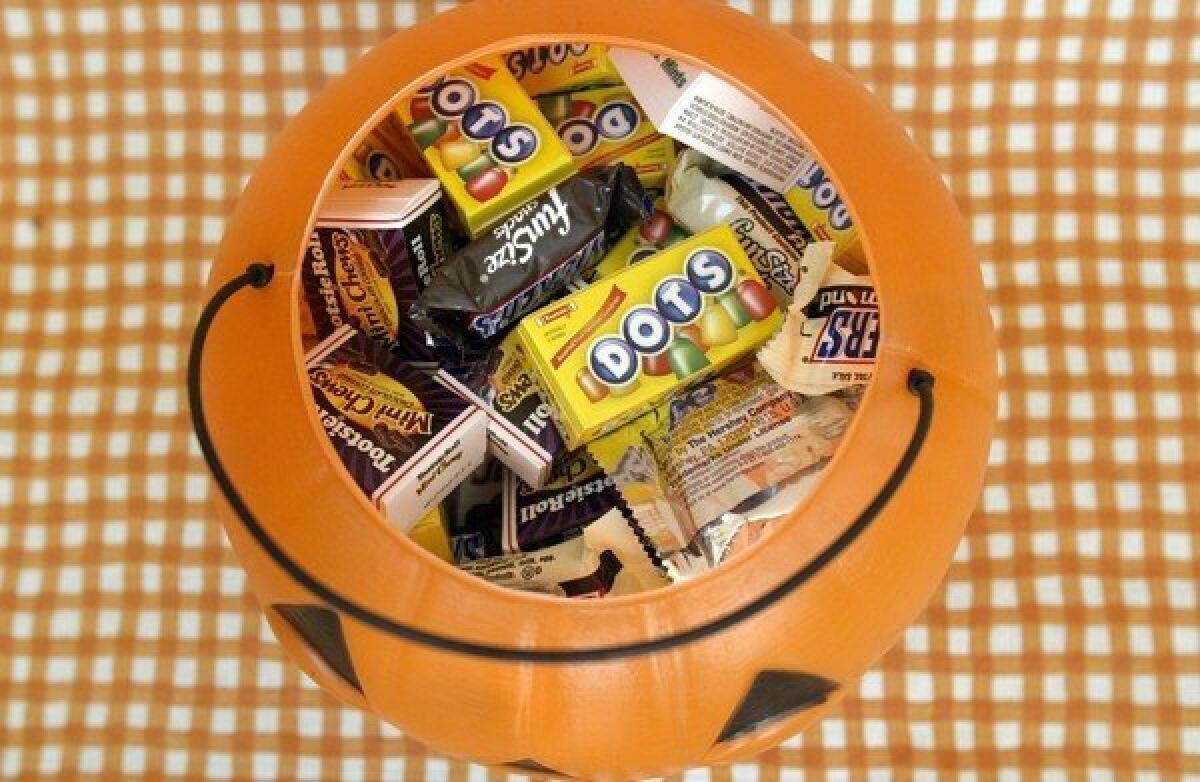Grandma says children preferred fruit candy in Halloween experiment

Inspired by a Yale economist’s annual Halloween experiment that uses trick-or-treaters as guinea pigs, one Angeleno decided to try an experiment of her own. Nancy Levitt, 64, had the hundreds who came for candy choose between three options – and found a few surprises along the way.
Levitt read an Oct. 31 Column One about Dean Karlan, a Yale behavioral economist who conducts experiments each year on the hundreds of kids who come to his popular New Haven neighborhood on Halloween. The answers they give to his surveys and the candy they choose reveal interesting facets of children’s behavior.
Levitt considered her setting. She lives in the Beverly Hills Post Office neighborhood where residents pull out all the stops for Halloween, she said – fog machines, spooky music and giant pumpkins.
“People go crazy here,” she said in an interview.
Hundreds of kids stream into the neighborhood – perhaps 600 this time, she guessed. With such a high density of trick-or-treaters, her street could be fertile ground for experimentation.
“I made it kind of a game for me,” she said. “I wanted to see what would happen.”
Levitt was tasked with handing out candy while her husband escorted their 2 1/2-year-old grandson around the neighborhood. She decided to conduct a little test: Would kids prefer fruity candy (such as Jolly Ranchers and Skittles), chocolate candy (including Milky Way and Three Musketeers) or bags of Snyder’s pretzels?
Levitt bought about 1,000 pieces of candy and 30 bags of pretzels. She separated the three choices into baskets and told the kids they could either pick the pretzels or five pieces of fruity or chocolate candy. To her surprise, the fruity ones were the first to go.
“I thought they’d all go for chocolate,” she said.
She also found another interesting trend: Younger kids were quite polite, generally taking just one or two. But when she told them that they could take five pieces, it threw them for a loop.
“They would stand there forever because it was such a difficult decision,” she said. “When they were told they could have five, it was harder than picking two and walking away.”
As it got later, the older kids who started coming out without their parents would often grab gobs of candy, Levitt said.
“Of course, towards the end of the candy, the rules were over and kids were taking what they could get!” she wrote in an email.
With so many costumed kids prowling the streets, the experiment was over in an hour and a half. Levitt says she’s looking forward to trying it again next year.
ALSO:
A hunt for dark matter in a former gold mineTrick or treat for science: Kids become guinea pigs
Eureka! Did neutron stars forge all the gold in the universe?







